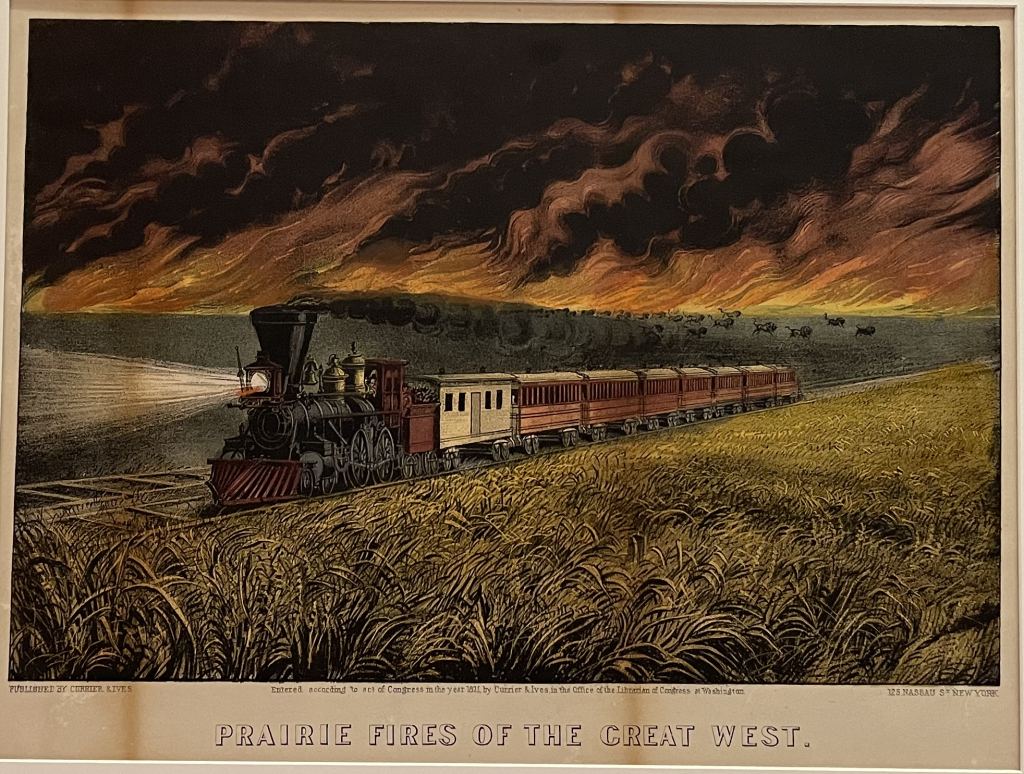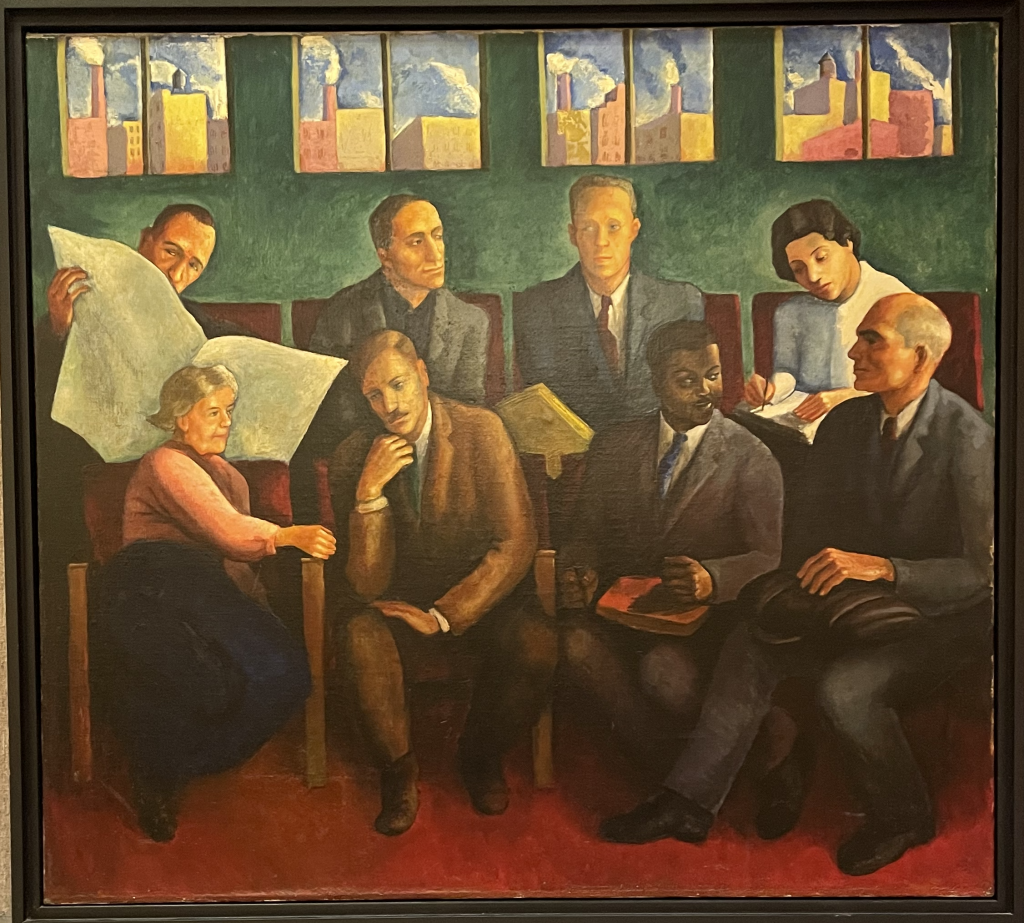This is part of a series of blog posts highlighting objects and archival documents from Social Climates: Power and the Environment in the Archives, an exhibition currently on view in the Kempner Gallery at Columbia’s RBML. Drawing on a wide array of RBML collections and materials, Social Climates explores the interconnections between culture, history, politics, and the natural world.
The following is adapted from the Social Climates exhibit essay text by Thai Jones, Curator of American History.

In a series of famous allegorical illustrations, the Currier & Ives company traced the westward expansion of Euro-Americans across the continent. Though most of these images were triumphant, or nostalgic, the company discovered that disaster scenes also sold well – especially those depicting fire.
“Prairie Fires of the Great West” depicts the transcontinental railroad, with a locomotive pointing its beacon westward toward progress, while a wild conflagration and fleeing bison menacingly loom in the background. As historian Stephen Pyne has noted, the image announces the arrival of fossil-fuel energy while contrasting two types of fire: “open burning of prairie and internal combustion of coal.” In the artists’ imagination the transition would be seamless: “Free-burning fire passed from the scene; internal combustion drove into the future.”

Eight leaders of the Communist Party in America are represented in Lydia Gibson Minor’s painting, “The Delegates”. Gathered in a meeting room near Union Square, the comrades are framed by a series of windows. In several, smoke billows out from the city’s tenements and factories. Art historian Goldie Gross notes that the inclusion of this iconography was meant to provide a visual link between Party leaders “who likely spent much of their time in offices and meetings” and “their intended worker-based constituency.”
Although no one would confuse American communism for an environmental movement, the Party knew to critique capitalism on all fronts. Its most prominent newspaper, The Daily Worker, often called attention to water and air pollution wrought by the capitalist system and connected the plight of laborers directly to ecological devastation caused by the profit motive and unregulated industry.
Social Climates runs through September 30, 2022 in Kempner Gallery at Columbia’s RBML, 6th Floor Butler.